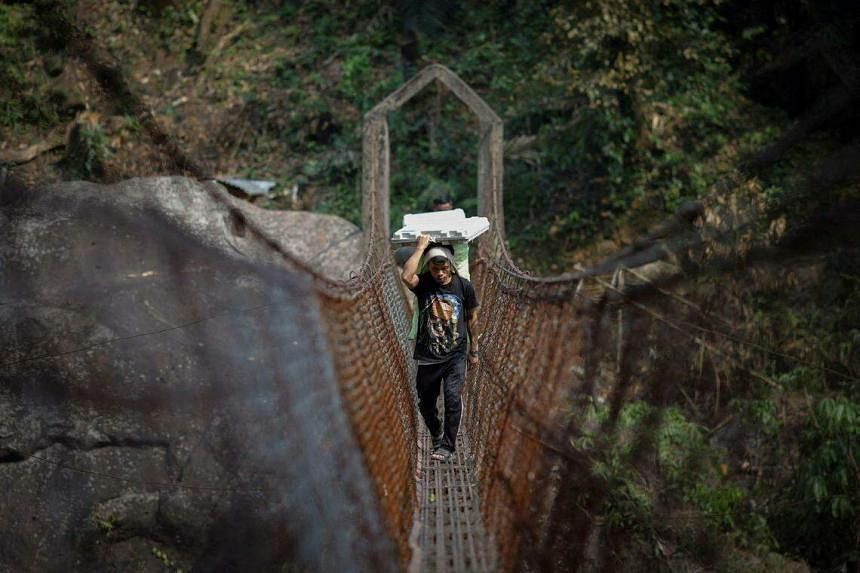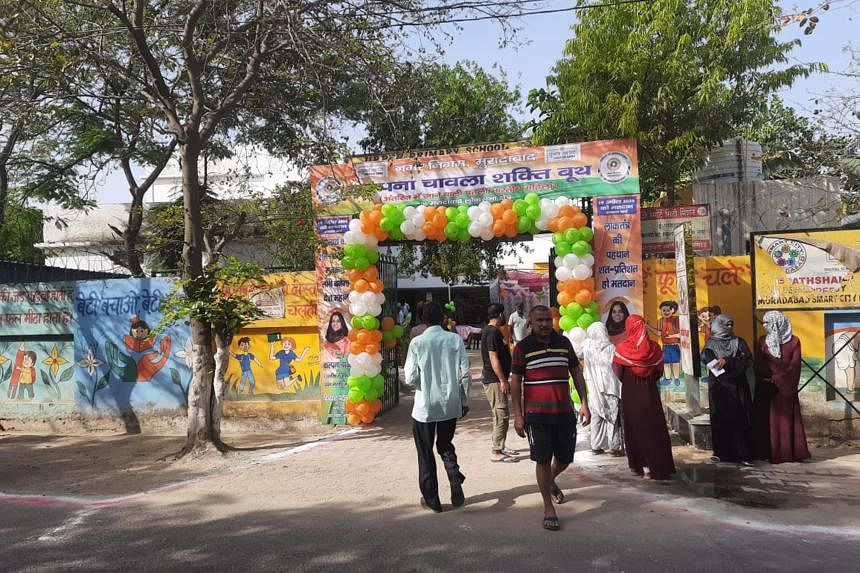MORADABAD/KOCHI - India’s multi-phase general election kicked off on April 19, with millions of voters making their way to the polling booths to select candidates for 102 seats – spread across 21 states and union territories – in the Lower House of Parliament, the Lok Sabha.
The Election Commission said that more than 60 per cent of eligible voters had cast their ballot by 7pm local time (9.30pm Singapore time). The voter turnout in 2019 was 67.4 per cent, the highest in all Indian general elections.
Election officials said that there was high turnout despite a heatwave in one of the driest, hottest summers in recent memory. Temperatures hovered around 34 deg C to 40 deg C in most polling regions.
More than 167 million voters were registered to cast their votes on the opening day of the seven-phase election, in which Prime Minister Narendra Modi’s Bharatiya Janata Party (BJP) hopes to win a third term in power.
The marathon election for 543 constituencies is scheduled to take place between April 19 and June 1, with all results expected to be declared on June 4.
In the opening phase of the 18th Indian general election, a total of 1,625 candidates – including 134 women – were in the running, with voters casting their ballot at 187,000 polling booths across the country.
The greatest concerns for 969 million voters countrywide – 18.2 million of them first-timers – are rising unemployment and prices, as well as corruption and religious issues.
The 73-year-old Mr Modi is the clear front runner, with opinion polls predicting an easy win for the BJP, which won 303 of 543 seats in the 2019 election. The BJP is aiming to garner 370 seats this time.
Mr Modi is still popular after 10 years at the helm.
One of the biggest reasons voters surveyed by the Centre for the Study of Developing Societies (CSDS) think-tank cited for voting for the BJP was the consecration of a temple to the Hindu god Ram in Ayodhya in the state of Uttar Pradesh by Mr Modi on Jan 22.
Hindus make up 80 per cent of India’s population, and the temple is seen as the fulfilment of a longstanding promise by the Hindu nationalist BJP. The temple was built over the ruins of a 15th-century mosque destroyed in 1992 by a Hindu fundamentalist mob.
So far, only one prime minister, Mr Jawaharlal Nehru, has successfully completed three terms in power.
In the first phase, Mr Modi’s party faced its toughest battle in the state of Tamil Nadu – the largest in southern India – where all 39 constituencies went to the polls on April 19. People there have rarely voted for the BJP, preferring instead the state’s regional parties.
But this historical trend did not dampen Mr P.N. Mohan’s excitement in Tamil Nadu’s Pollachi constituency. Mr Mohan, a BJP district president in nearby Coimbatore South, pointed at booth decorations including balloons and colourful floor designs made with rice powder, and the saplings the election officials had lined up to gift the earliest voters.
“It feels like a wedding scene here today,” he said.
In the first phase, voters also picked their preferred candidates for 12 seats in the desert state of Rajasthan in the west; eight in the country’s most populous state of Uttar Pradesh in the north; six in Madhya Pradesh in central India; five each in Uttarakhand, Maharashtra and Assam; four key seats in Bihar; and three in West Bengal.
The BJP and its coalition partners, who form a grouping called the National Democratic Alliance, are hopeful of winning all 80 seats that are being contested in Uttar Pradesh. Uttar Pradesh, with the largest number of constituencies in India, is also the bedrock of the BJP’s national dominance.
Uttar Pradesh, which has given India nine prime ministers, is home to Mr Modi’s constituency of Varanasi, an important Hindu pilgrimage centre that will vote on June 1. Residents in Uttar Pradesh will vote in all seven phases of the election.
First elected as prime minister in 2014, Mr Modi finds himself in a commanding position today because the BJP’s policies of muscular nationalism, welfare economics and polarisation of Hindus against Muslims has cemented his popularity.
There has been a tacit assumption in many of Mr Modi’s campaign speeches that he is coming back to power, said Professor Sanjay Kumar, co-director of CSDS.
The BJP is being challenged by an alliance of opposition parties – called the Indian National Developmental Inclusive Alliance (India) – from across the country. The India alliance is led by the Congress party, with party president Mallikarjun Kharge at the helm.
The grouping hopes to unseat Mr Modi by tapping into voters’ key concerns, such as unemployment and the rise in prices.

Ms Rekha Saxena, a 58-year-old widow in Moradabad, Uttar Pradesh, who earns less than 10,000 rupees (S$163) a month selling revenue stamps at the local district court, said she could barely afford cooking gas, which now costs more than 1,000 rupees a cylinder.
But she remained a loyal BJP voter to “give them another chance” to tackle inflation.
The Congress’ Rahul Gandhi, while campaigning in the southern state of Kerala – which votes on April 26 – attacked the BJP for its “dictatorial attitude” and the misuse of central agencies to crush the opposition.
Unlike the northern Indian states like Uttar Pradesh that the BJP has swept in recent elections, its Hindu-revivalist agenda and development promises find little resonance in the more prosperous south Indian states.
Mr Gandhi – a scion of the Gandhi-Nehru dynasty that has given India three prime ministers – asked people to vote against the BJP to safeguard India’s constitutional values, such as secularism and the federal structure.
Voting on April 19 was largely peaceful, but there were sporadic incidents of violence.
Voters had to run for cover following gunfire in the conflict-hit north-eastern state of Manipur, where voting for two constituencies were under way on April 19.
Separately, at least one person was injured in the state of West Bengal – where three of the 42 constituencies went to polls – in clashes between the ruling Trinamool Congress and the BJP.

